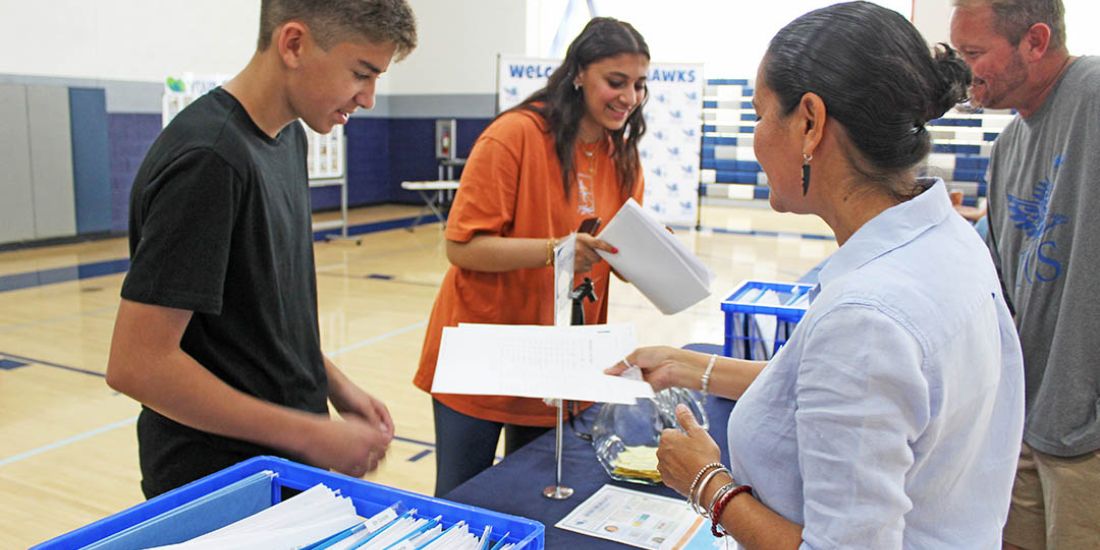
Building a personalized education: The "magic" behind The Gregory School schedule
From the outside, as a student or a family member, it can look like magic: Students request classes, and then at registration they receive schedules reflecting their choices–the appropriate placement in mathematics and language regardless of their grade level, an independent study, trimesters of arts electives within a semester system, one semester each of two different social sciences classes, the free H block they need so they can travel to their community college class.
This year, 96% of individual student course requests were satisfied. But it’s not magic. After completing the schedule this summer, TGS Registrar Mrs. Carol Martin and Dean of Faculty and Academic Programming Mrs. Allycyn Jacobs offered to share a behind-the-scenes look at The Gregory School’s foundation for our personalized education: The Master Schedule!
The process begins in January, when faculty and deans determine which courses will be taught and the curriculum guide is completed. While many classes are offered every year, some are offered alternating years, such as Mr. Jim Carlson’s Greek & Roman History and History of World Sports. Alternating-year classes are intentionally scheduled to maximize the number of courses offered to students over their time here. In addition, teachers add new classes each year based on their own interests and the needs and interests they see in their students, such as Middle School Publications, taught by Ms. Beth Cain and Ms. Anna Cain, which started in the 2022-23 school year.
“We also offer a lot of singleton classes because of our personalized education, which makes things even more complicated,” Mrs. Jacobs said. This means that if a student wants to be in Latin 4 and we only have one section of Latin 4, everyone works to make that one section fit for every student who needs it.
“All of these features give the students a broader course selection, but they also add to the puzzle,” Mrs. Martin said.
In the spring, teachers showcase new classes at student meetings and then students are asked to review the curriculum guide with their families and select their courses, returning signed forms to school by a specific deadline. Simultaneously, all new students who applied by the deadline are selecting their courses.
“The most important thing that students and families can do at this stage is to get their course selection forms in by the deadline,” Mrs. Martin said. When the forms are received, student selections are entered into our schedule builder, and if student forms are missing, it can cause misleading problems.
“If a course seems to not have enough students interested, we might decide not to offer it,” Mrs. Jacobs said. “So if only three students who turn in their forms on time request a class, we may cancel it and adjust the schedule, and then have to decide whether to readjust and offer it when five students turn in their forms late requesting that class."
“A puzzle is the only way to really describe it,” Mrs.Martin said. “We look at student selections, teacher constraints, the number of classes a teacher can teach, class sizes, and classroom availability and then work to put them all together.” When pieces don’t fit, for example the student who has a conflict with Latin 4, or a faculty contstraint such as Ms. Amy Haskell, a professional photographer and TGS alumna who teaches Day 2 and Day 4 mornings only because she is a working photographer, “We then start thinking, ‘Can we move this here, and then this here?’”
In the end, though, when that student does get into that photography class, they learn from a working professional in a class of seven other students. And they may even get to become Ms. Haskell’s intern and work on real photo shoots. This is the beauty of The Gregory School’s personalized education.